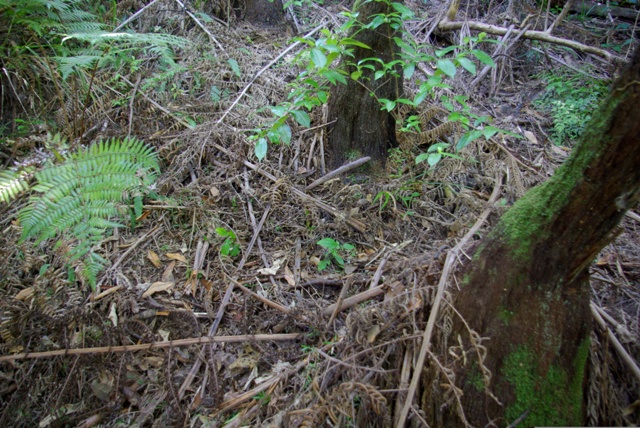New Zealand coastal and rain forest usually develops dense leaf litter on the forest floor. Some Piha locals are raking out this litter and tidying up their forest.
Here’s 11 reasons why it is best to leave it where it lies.
- Leaf litter catches and retains moisture. It acts as mulch, preventing the soil from drying out and keeping plant roots moist.
- Leaf litter suppresses the growth of weeds.
- Leaf litter breaks down into humus or forest duff which is a rich source of nutrients for plants.
- Leaf litter contains seeds dropped from trees and excreted by birds which will over time germinate and maintain the succession of forest growth.
- Leaf litter contains food for birds in the form of seeds, plant material, and insects such as wetas, beetles and centipedes.
- Leaf litter provides habitat for insects, invertebrates, lizards and geckos.
- Leaf litter provides material for birds when they are nest building.
- Many native trees do not like disturbance and compaction around their roots. Leaf litter protects their roots and influences their eco-system and habitat. Examples of this are kauri and cabbage tree.
- Leaf litter diffuses and reduces the velocity of stormwater, helping prevent erosion and sedimentation of waterways.
- Many beautiful small plants grow on the forest floor among leaf litter and tree roots including ferns, herbs, orchids, fungi, mosses, liverworts and the rare wooden rose.
- If you want a good book that describes the plants, birds, insects, lizards and all the other elements of the New Zealand forest with copious photos look for John Dawson and Rob Lucas’s Nature Guide to the New Zealand Forest published by Godwit, now in its 6th printing since 2000. It costs $45 and every Piha home should have one.



